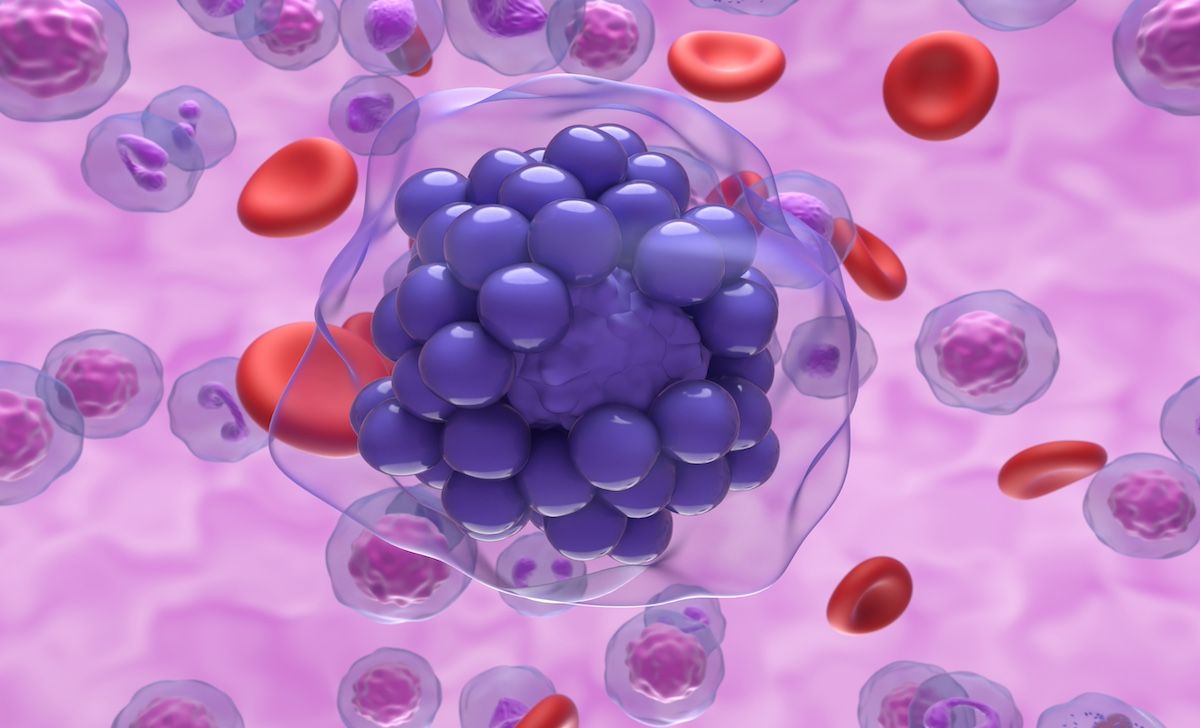- Center on Health Equity & Access
- Clinical
- Health Care Cost
- Health Care Delivery
- Insurance
- Policy
- Technology
- Value-Based Care
ViPOR: Novel Targeted Therapy Combination Shows Potential in Relapsed DLBCL
The 5 agents in ViPOR—including venetoclax and lenalidomide—worked better together in a phase 1b/2 trial than they previously have, individually, in treating patients with certain diffuse large B-cell lymphoma (DLBCL) subtypes.
Potentially proving the adage that a whole can indeed be greater than the sum of its parts, a 5-agent combination tested in a single-center phase 1b/2 preclinical trial seems to provide synergistic cytotoxicity in activated B-cell (ABC) large B-cell lymphoma (LBCL), more so than any of the individual drugs have shown in previous phase 3 trials. The authors described their work in The New England Journal of Medicine1; the journal simultaneously published an editorial about the study.2
ViPOR (venetoclax, ibrutinib, prednisone, obinutuzumab, and lenalidomide) was administered to 60 patients with relapsed or refractory BCL:20 patients (10 patients with diffuse LBCL [DLBCL]) in phase 1b and 40 patients (all with DLBCL) in phase 2. More than half of the 48 evaluable patients (54%) experienced objective responses, and 38% had complete responses.
The study authors note that each of ViPOR's agents—venetoclax, ibrutinib, prednisone, obinutuzumab, and lenalidomide—targets a particular LBCL survival pathway | Image Credit: laszlo-stock.adobe.com

Complete responses occurred only in patients with non–germinal center B-cell (GCB) DLBCL and high-grade BCL with rearrangements of MYC and BCL2 or BCL6 (or both), the authors noted.
Circulating tumor DNA was undetectable in 33% of the patients at the end of ViPOR therapy. With a median follow-up of 40 months, 2-year progression-free survival and overall survival were 34% and 36%, respectively.
In patients with specific molecular DLBCL subtypes, these are durable remissions, the NEJM editors stated, noting that the adverse events (AEs) associated with ViPOR treatment were also mainly reversible. They added that the evidence for the effectiveness of venetoclax and lenalidomide combined seemed particularly compelling.2
What They Were Thinking
Numerous oncogenic mutations have been identified in DLBCL, leading to precision medicine approaches that target essential survival pathways.
“We hypothesized that the inhibition of multiple driver pathways is necessary for the curative potential of targeted therapy,” wrote the authors.
The 2 major subtypes of DLBCL are ABC-like tumors and GCB-like tumors.3 The NEJM editors pointed out that the ABC subtype is high risk, and within the favorable-risk GCB subtype, high-grade BCLs with MYC/BCL2 rearrangements (HGBCL-DH-BCL2) represent a subgroup currently associated with a poor prognosis.2
Each of ViPOR’s agents targets a particular LBCL survival pathway. Venetoclax inhibits the anti-apoptotic BCL2, ibrutinib is a Bruton tyrosine kinase inhibitor, prednisone targets glucocorticoid receptors and B-cell receptors, obinutuzumab is an anti-CD20 monoclonal antibody, and lenalidomide is an oral immunomodulatory agent that degrades 2 key B-cell transcription factors.
The administration schedule was designed to optimize multiagent drug synergy.
“We designed a schedule reminiscent of combination chemotherapy, in which all targeted agents were concurrently administered in a noncontinuous fashion for a maximum of 6 cycles, [to] avoid the cumulative toxic effects that are associated with continuous or indefinite drug dosing,” the team reported. Ultimately, AEs frequently resolved during the patients’ offtreatment week, and most patients received all treatment cycles on schedule, with no dose reductions.
Also regarding safety, the authors noted that in the study’s phase 1b portion, a single dose-limiting toxic effect of grade 3 intracranial hemorrhage occurred, which established 800 mg as the recommended phase 2 dose of venetoclax.
Going Forward
The NEJM editors declared ViPOR to be apotentially safe, effective, accessible, and chemotherapy-free regimen, especially in the treatment of patients with high-risk non-GCB and HGBCL-DH-BCL2 subtypes. The authors noted that, indeed, further study will focus on its activity in patients with relapsed or refractory disease of those subtypes.
The editors wrote that they believe future studies will define the best timing of the ViPOR regimen in LBCL management. Because ViPOR was shown to have efficacy in patients with disease that has become resistant to chimeric antigen receptor T-cell therapy, it will possibly be utilized as a third-line treatment, they said.
References
1. Melani C, Lakhotia R, Pittaluga S, et al. Combination targeted therapy in relapsed diffuse large B-cell lymphoma. N Engl J Med. 2024;390(23):2143-2155. doi:10.1056/NEJMoa2401532
2.Goldstein JS, Alizadeh AA.ViPOR’s venom — rationally targeting DLBCL with precision.N Engl J Med. 2024;390(23):2209-2211. doi:10.1056/NEJMe2405437
3. Alizadeh AA, Eisen MB, Davis RE, et al. Distinct types of diffuse large B-cell lymphoma identified by gene expression profiling. Nature. 2000;403(6769):503-511. doi:10.1038/35000501
